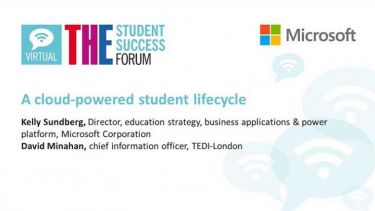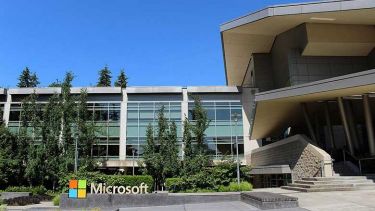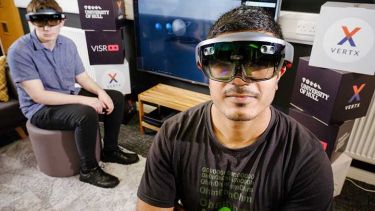Staffordshire University has utilised the Beacon app to offer data-driven recommendations, free up time for innovation and create new relationships
While artificial intelligence is widely recognised as having the potential to transform higher education, there are still questions about what form it may take in the real world. How will such bleeding-edge technology be implemented? How will it affect the student body? What does “the shift to digital” look like in practice?
Some answers can be found at Staffordshire University. On 21 January 2019, it launched Beacon, an intelligent chatbot app that serves as a digital helper on matters of student welfare and engagement. Like all universities, Staffordshire wants to maximise student attainment and enhance the campus experience. But director of digital services, Andrew Proctor, believes that what sets Staffordshire apart is its appetite to find enterprising solutions such as Beacon and position them at the core of the university’s operations. “When I joined Staffordshire University, there was an ambition or an aspiration to be the leading digital university,” he says. “It was very much a strapline, ready for somebody to develop and flesh out into something meaningful. All of our strategies [and] all of our masterplans involve digital.”
Beacon is central to this. Named by students and developed by Staffordshire University with the cloud services provider ANS, Beacon’s technical architecture utilises Microsoft’s Azure Stack – a hybrid cloud computing software that enables organisations to build and run apps from their own data centres. Azure’s machine-learning language processing software, LUIS, transforms user commands into code, rendering it as actions. If a student requires a new ID card, they need only ask Beacon, verbally or via text. Microsoft’s Bot Framework facilitates intelligent interactions with users, answering queries and offering data-driven recommendations. Beacon’s functionality is data-driven: the behavioural data that it captures is not commercialised, serving only to inform Beacon’s user experience. “It’s not just us sitting around thinking, ‘What would students like next?’ It’s directly informed by students,” says Proctor. He believes that using extant tech from Microsoft made developing Beacon more simple. Because data management and other everyday tasks are managed by Microsoft, it frees up more time for innovation at Staffordshire’s IT department. “There are all these tools that are within the Azure Stack that just really help you focus less on the actual technology and more on how it is going to be used,” says Proctor. “With the Microsoft Stack, a lot of the tools and algorithms are already there for you to use as starting points, so it really accelerates your ability to get something in the hands of the students.”
The efficiencies are not only delivered across IT. Beacon is in its infancy and its impact on attainment is yet to be established, but in its first month Beacon answered 10,000 queries, more than 1,000 of which were asked over the weekend. “Previously we wouldn’t have had that 24/7 provision,” says Proctor. “Perhaps they would have had to wait, or even worse, the question would have gone unanswered.”
More than 2,500 day-to-day tasks were completed in that month, too, such as ordering new ID cards and help with bank letters, while 2,000 students found their lecture halls via the app. The number of student interactions Beacon completed would have previously required five human support officers. Such efficiencies are welcome, but Beacon’s capacity for creating new human relationships on campus is where its true potential lies.
“For me, that combination of artificial intelligence technology and human support is where it gets quite exciting,” says Proctor. “Beacon helped broker new relationships between 300 students and their personal tutors. Every student here has access to a personal tutor but they are not always aware of that. They don’t always make use of it. So this is a really good example of artificial intelligence helping form new human relationships, rather than just trying to replace them.”
Find out more about Microsoft in Education.










